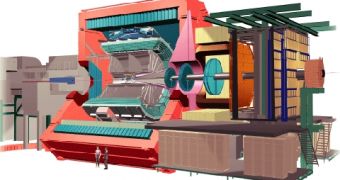UK experts have finally completed a successful experiment that allowed them to demonstrate that the energy recovery process is possible on a particle accelerator. Three days ago, on December 13th, at 2 am, the Accelerators and Lasers In Combined Experiments (ALICE)' linear accelerator transported for the first time an 11 million eV accelerated beam of electrons running at 99,9% of the speed of light through the entire length of its circuit.
The people at the Science and Technology Facilities Council (STFC) at the Daresbury Laboratory in Cheshire, in the northwestern part of England, who run ALICE, were extremely happy to find that theirs was the first European one that actually managed to "recycle" energy by capturing and re-using it after every circuit. When the circuit was complete, instead of discarding the used beam, its energy was harnessed and put to a new use. This could open new doors for other accelerators, which may now only use a portion of the energy traditionally required.
"Energy recovery means a massive saving of power or alternatively, for the same power usage, light sources and colliders of unprecedented power and intensity," shared Dr. Susan Smith, chief of the Accelerator Physics Group at STFC's Daresbury Laboratory, quoted by PhysOrg. "The ALICE team have been working tremendously hard to demonstrate energy recovery and when we did this in the small hours of Saturday morning, it felt like Christmas had come early."
"We have proven energy recovery, but not yet quantified it. Once fully commissioned ALICE will accelerate to 35 million volts, electrons will be sent round the accelerator at 99.99% of the speed of light and 99.9% of the power at the final accelerator stage will be recovered, making the power sources for the acceleration drastically smaller and cheaper and therefore economically viable," she added.
On the importance of the event, Professor Keith Mason, STFC Chief Executive, stated that "This is an impressive and significant step forward for ALICE. In itself, the concept of energy recovery is not new, but the application of this technique in combination with advanced accelerator technologies, such as super-conducting cavities, has exciting prospects for the future of next generation light sources and particle colliders".

 14 DAY TRIAL //
14 DAY TRIAL //